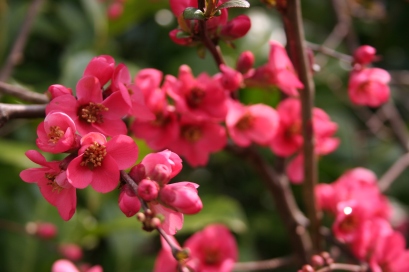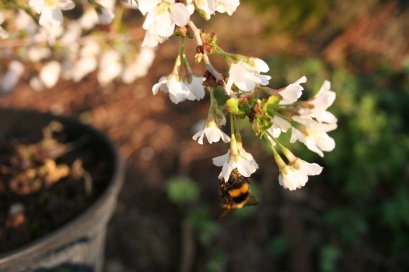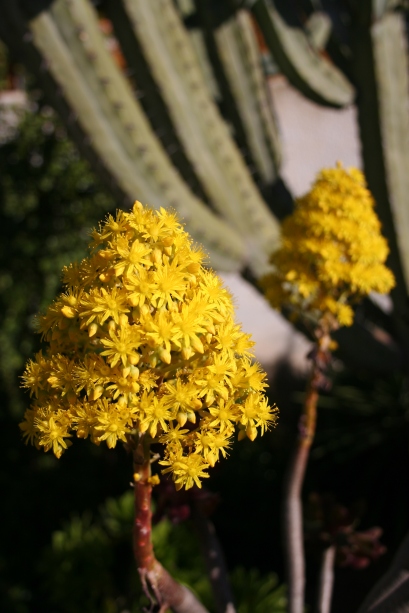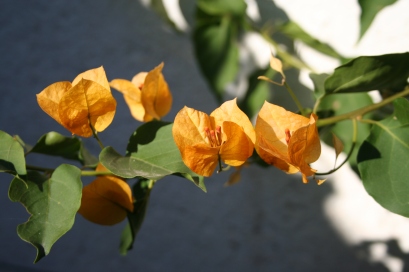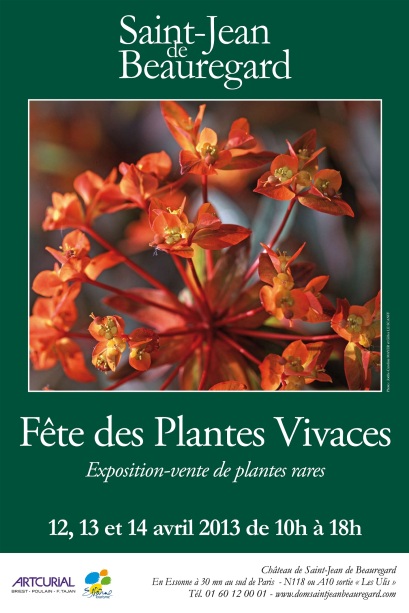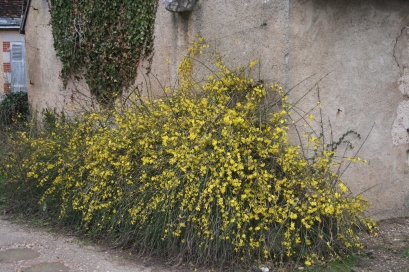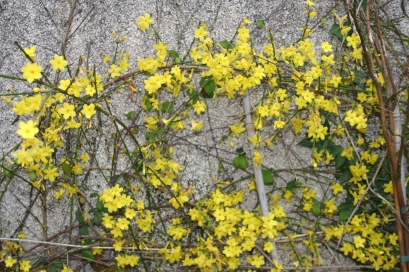It is wise to be cautious in gardening, but here in the Loire Valley it is even harder to ignore the clear signs of approaching Spring.
Even the most pessimistic and wary of the locals were convinced when hundreds of cranes flew over the town this weekend. Like many a British pensioner, they have been overwintering in south-west Spain and are now migrating to their breeding grounds in Scandinavia and Eastern Europe. We often have them spend the night nearby: the river Cher and the lakes of the Sologne are ideal for a good nights rest and a snack before moving on.
The mild weather has encouraged an early flowering of many plants in gardens around the village. We have a couple of Camellias I full flower and there are many others to be seen on our regular walks. This morning we found a huge Magnolia soulangeana covered with deep purple flowers and our own M. stellata is beginning to open. The White Border should be a real picture very soon with Magnolia stellata, Viburnum burkwoodii and Clematis armandii all about to flower. There are increasing numbers of Daffodils and Crocus out while a large number of early Prunus are colouring the gardens white and pink. If the birds and the flowers think its spring, who are we to doubt it?
 We have just heard that Chaumont Garden Festival, surely the one “must see” European event for garden designers and enthusiasts, is opening between 25th April and 2nd November this year, a slight extension at the end of the season which should prove popular. Between students, garden tour clients and general visitors, we visit this show up to a dozen times each year and never tire of it. This year’s theme is “Gardens of Deadly Sins”. I can’t wait!
We have just heard that Chaumont Garden Festival, surely the one “must see” European event for garden designers and enthusiasts, is opening between 25th April and 2nd November this year, a slight extension at the end of the season which should prove popular. Between students, garden tour clients and general visitors, we visit this show up to a dozen times each year and never tire of it. This year’s theme is “Gardens of Deadly Sins”. I can’t wait!
Frustratingly, this morning’s post brought our copy of the Yellow Book of UK gardens open to the public. Frustrating, because we visit the UK only very rarely these days and have little chance of enjoying any of the 8,800 gardens detailed in the handbook. It has been suggested from several corners that I organise a series of English garden tours, so I guess you never know. I commend the Yellow Book to you along with visits to as many gardens as possible; it’s all for charity and a fantastic learning experience for any gardener.
On the other hand we had a great day out at the Salon Vegetal trade show last week and our membership of the Association of Parks and Gardens allows us access to all sorts of private and public gardens in the centre of France. Only last week we were invited to a chateau only recently open for garden visits and conveniently close to our home. The chateau de Poulaine is sure to attract plant enthusiasts and we will be keeping a close eye on developments.
High on my list of gardening events this year is the Floralies at Nantes, an international garden show hosted by France every five years. One of Europe’s largest floral events, it is to be held over ten days from May 8th. I hope to visit with Academy students who are coming to us from Oman for a two week course on cactus growing. Apart from the garden show, I gather the botanic garden in Nantes houses one of the largest collections of cacti in France.
Most of my gardening time has been spent catching up with the weeding and pruning to prepare for the rapidly approaching new season. I have also just completed our little potager behind the cabin and will soon be turning my attention to two additional projects: finally building our Moon-gate, the materials for which have been sitting around on a pallet for far too long, and to sort out the compost section, a disgraceful area at present. It all takes time, but I am getting there.
One last event which put a smile on my face; my propagation bench was bought through Thomson and Morgan. The polythene cover features an array of zips and openings making it a very practical piece of equipment, but a year of sunshine, supplementary lighting, dust and general use had left it in a rather sorry state. I noticed that although it was bought in the UK the packaging was German so I decided to contact the original supplier, Bio Green to ask if I could purchase a new cover. Not at all, I was told, we will supply one free of charge on warrantee. Service beyond the call of duty, I thought; Bio Green are on my favourite suppliers list from now on. The propagator is full of emerging seedlings….I do love this time of the year!

























